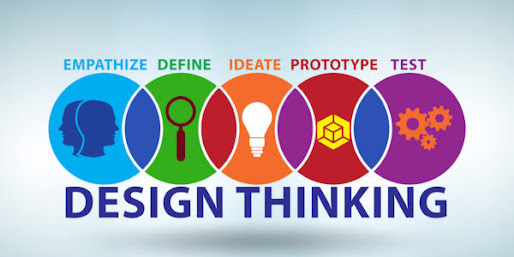Design thinking is an innovative problem-solving approach that emphasizes creativity, empathy, and an end user-centered mindset. By using Chat GPT and Eduprotocols together, educators can create engaging learning experiences that allow students to engage in design thinking and develop a range of skills that are essential for success in the 21st century.
ChatGPT is an advanced language model developed by OpenAI that can simulate human conversation. By using ChatGPT in the design thinking process, students can have a virtual assistant that can provide them with information, answer questions, and generate ideas for their projects. ChatGPT can be integrated into the design thinking process in many ways, such as helping students research and brainstorm solutions to problems, facilitating the empathy by allowing students to engage in a simulated conversation with people who are affected by the problem, and providing feedback and suggestions to throughout the process.
For those not familiar with the design thinking process, below are the basic steps. Be mindful that these steps do not necessarily always follow this order and reordering and going back and forth is acceptable as new insights are found during the process.
- Empathize: In this stage, designers seek to understand the needs, wants, and challenges of the people they are designing for. This can involve observing, interviewing, or otherwise engaging with the target audience.
- Define: In this stage, designers define the problem they are trying to solve. This involves synthesizing the insights gained in the empathize stage into a clear and actionable problem statement.
- Ideate: In this stage, designers generate a wide range of ideas that could potentially solve the defined problem. This can involve brainstorming and sketching.
- Prototype: In this stage, designers create simple and inexpensive prototypes of their ideas in order to test and refine them. This can involve creating physical or digital prototypes, depending on the nature of the problem being addressed.
- Test: In this stage, designers test their prototypes with the target audience to gain feedback and insights. This can involve conducting user testing or other forms of feedback gathering.
If you're not yet familiar with Eduprotocols, they are a series of structured activities and reusable lesson frames that promote active learning, collaboration, communication, creativity, and critical thinking. They are cross-curricular and can be adapted for any grade level. By using Eduprotocols in conjunction with design thinking, educators can create a more engaging and interactive learning experience that allows students to effectively engage in the 4 C's.
One Eduprotocol that works particularly well with design thinking is Iron Chef. In a nutshell, an Iron Chef is like a jigsaw that overtly engages students in the 4 C's. In this protocol, students work in teams to research and develop a solution to a problem or challenge. Each team is given a specific set of tools or resources that they must use to complete their project, just like an Iron Chef who is given a specific set of ingredients to use in their dishes. The Iron Chef Protocol promotes creativity, problem-solving, and collaboration, making it an ideal tool for the design thinking process.
To use Chat GPT and Eduprotocols together in the design thinking process, educators can follow these steps:
- Introduce the design thinking process to students by providing them with a challenge or problem to solve. This could be a real-world or local issue, a project related to a specific subject area, or a prompt related to a particular skill or competency.
- Set up an Iron Chef by dividing students into teams and provide each team with a set of tools or resources that they must use to complete the project. For example, one team might be given a research database, another team might be given a design software, and a third team might be given a set of images or videos. The different resources can serve as the secret ingredient portion of the Iron Chef.
- Use Chat GPT to facilitate the research and brainstorming stages of the design thinking process. For example, students can use ChatGPT to generate ideas, ask questions, and get feedback on their solutions. ChatGPT can also be used to facilitate the empathize stage by allowing students to engage in a simulated conversation with people who are affected by the problem or challenge. (Chat GPT, at the moment, is an 18 and over tool. Usage of this tool, for the time being, will need to be via a teacher account and with teacher supervision. This can alter the flow of an Iron Chef, but still feasible.)
- Use the Iron Chef Protocol to facilitate the ideation and prototyping stages of the design thinking process. For example, each team can work on a specific solution to the problem (each team member tackles a different aspect) using the tools and resources they have been given. The Iron Chef Protocol promotes creativity and collaboration, and it encourages students to work together to create a solution that meets the needs of the user or audience.
- In the presentation portion of Iron Chef, other teams can provide feedback to fuel the testing and refining stages of the design thinking process.
By using ChatGPT and Eduprotocols together, educators can create engaging learning experiences that allow students to engage in design thinking and develop a range of skills that are essential for success in the 21st century.
If you'd like to learn more about Chat GPT and other AI tools, click here to view a webinar from my friends at TeacherGoals. For more information about Eduprotocols, go to eduprotocols.com and or join the Eduprotocols Facebook Group by clicking here.






No comments:
Post a Comment